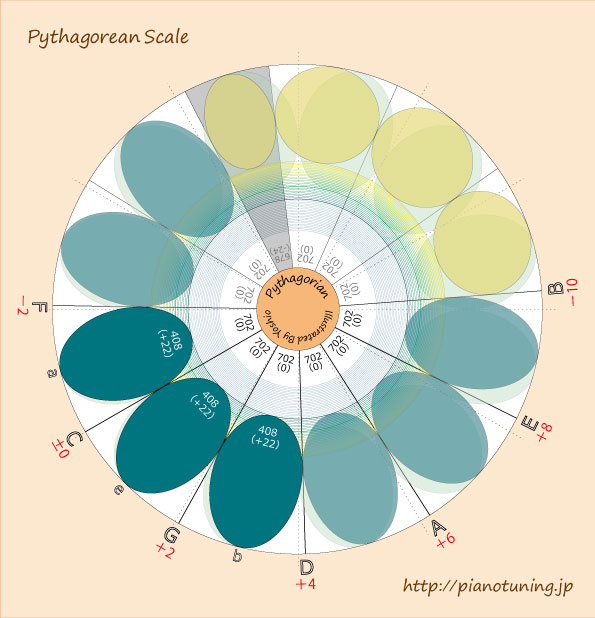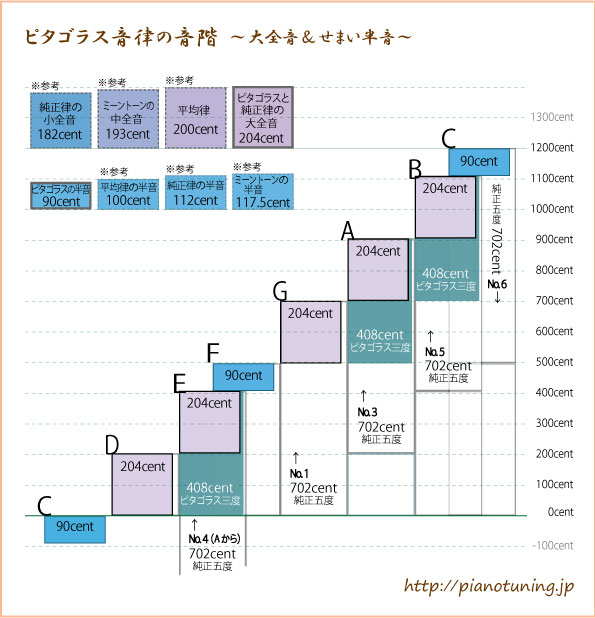* The scale in this page show a diatonic scale. Major scale constructed of 7 notes.
( In this graph, C is used as a base note [ dotted line and green ovals show equal temperament.)
” Pythagorean Scale ”
The 3rd overtone is the easiest to recognize.
For example G is the 3rd overtone of C.
This interval of 5th is very important for piano tuner.
5th of this 3rd overtone is pure 5th [702 cent ]
Pythagorean scale is constructed from this pure 5th.
F←C→G→D→A→E→B
But as a result, the intervals of 3rd (F-a, C-e, G-b ) have lots of howling.
This was not preferred in the time of Renaissance, and treated as a dissonance.
The interval of 3rd at this time is 8 cents higher then equal temperament,(compared to pure 3rd it is 22 cents higher)
Pythagorean scale is used in the melody of Gregorian Chant.(music before Renaissance)
Harmony of Shoh(traditional Japanese wind instrument resembling panpipes ;free-reed instrument used Japanese court music ) gives a feeling of expanse of universe.
Comfortable pitch for melody.
Bells of Big Ben →http://youtu.be/eSxf2Xti-5Y
I made this Pythagorean scale in step graph.
In order to contract a C major scale in Pythagorean scale,all the 5th is tuned in pure 5th [702 cent ]
F←C→G→D→A→E→B
Series of five successive upper 5th and one lower 5th start from C.
In this way, 7 notes on the scare are set.
Whole tone of scale is 204 cent.(same as whole note of Just intonation)
This is 4 cents wider than equal temperament.Semitone is 90 cent.
This is 10 cents narrow than equal temperament.
This is step-wise graph is not as uneven as Just Intonation
Major 3rd is 408 cents. This is wide pitch makes a comfortable sound in arpeggio and melodies in fast tempo.
It is very interesting that the leading tone becomes higher, when semitone is 90 cents narrow.
In classical temperament, scale with 6 successive pure 5th have same step-wise graph.
(ex.Bach’s Seal Fis dur & des Dur)
Music pieces of Chopin and Debussy that have lots of sharps# and flats♭, I believe that they composed with the image of the sound with beautiful scale.
reference:→ Pure
reference:→ Meantone
reference:→ Equal
Chisako Murakami translated it into English from pianotuning.jp
Special thanks to Ms. Midori Kita.

